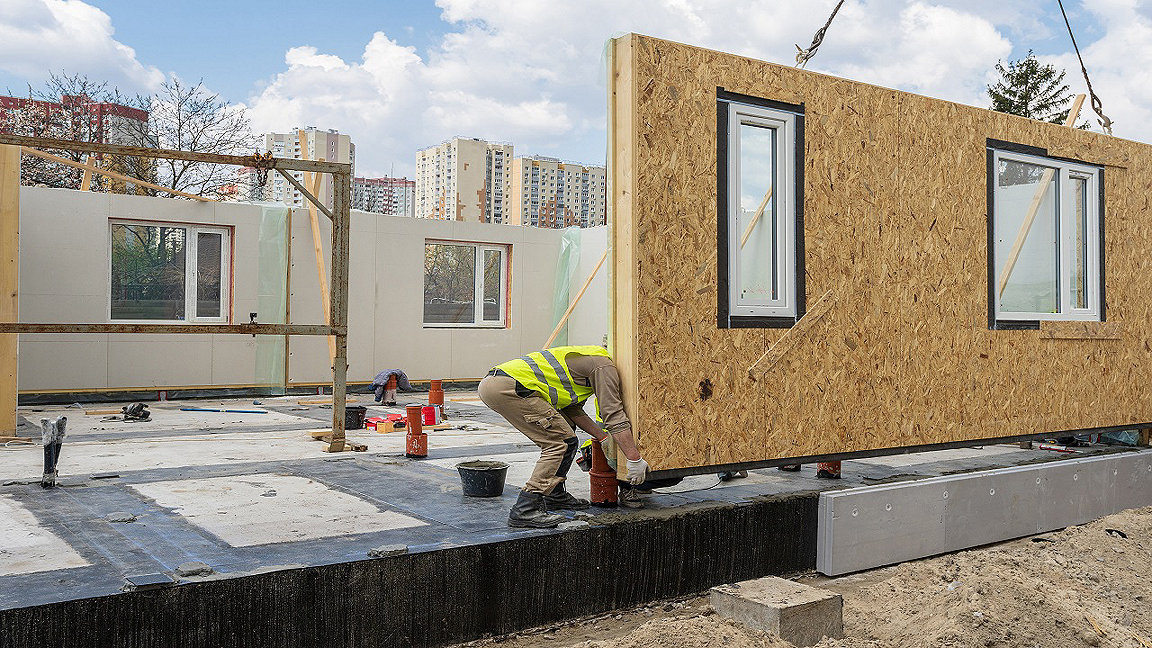
Homes England – the government’s housing accelerator – has been tasked with generating a significant hike in the number of new homes of all kinds nationwide, and off-site fabricators of modular buildings are expected to be significant beneficiaries of their Building Fund.
Modular construction is a delivery model worth considering in current times, particularly with the real drive for sustainability, sourcing local materials and adapting to on-site social distancing requirements. Modular construction can provide significant time and cost savings when carried out properly.
Modular construction allows for repeat builds, clear design packages from the outset, a reduction in labour costs and the use of low carbon materials and construction methods.
Many forms of modular
Modular homes have been around for some time, but new technologies and the UK’s growing housing needs are combining to create a boom in demand, which is likely to change building methods across the board. It should be noted that modular construction comes in various forms and does not just refer to 100% modular units; anything built off-site can be considered modular. Developers and designers should consider the utility of hybrid projects, where parts of a build are done on-site using traditional methods and the rest is modular, for example, installing internal bathroom pods in a hotel or student accommodation.
However, I would warn those involved throughout the design, production and installation chain that because of the number of variables involved in modular projects, it will be very different to traditional build projects. Therefore, they should seek expert legal advice at the outset, to avoid getting their fingers burned further down the line.
Modular construction will significantly impact the way the various parties work with each other: on build times, repairs and maintenance programmes, contract models, cooperation with utility providers and statutory undertakers to name but a few. The increase in the number of modular buildings is likely to have a noticeable impact not just on building methods but on the required workforce, design control, contractual mechanism and cross-party interactions across the sector as a whole with a real emphasis on collaborative working. Modular construction can be front loaded in terms of design, materials required and costs. For this reason, it is crucial that the parties involved do not rush into a modular build project before considering bespoke amendments to the agreements they use.
"anything built off-site can be considered modular"
- There are regulatory considerations in relation to the size of units that will need to be considered and programmed in – who is bearing the responsibility and cost?
- There are delay risks which will increase the costs of re-hiring transport – who is taking this risk?
- Modular assembly cannot happen in high winds and this needs to be factored in.
- If the connection points aren’t ready on site this will cause significant delay.
- Mechanisms akin to supply contracts will be needed to deal with transfer of risk and title of goods during delivery.
- Modular contractors often don’t store individual parts for each order and so the employer may have paid for goods it does not yet have title to – a particular risk in the event of insolvency.
- Once on site, units are nearly complete, and parties should consider inspection along the conveyor belt.
Modular homes producer Ilke Homes, which received a £30m investment from Homes England at the end of 2019, recently welcomed my colleague Simone Protheroe, who leads Clarke Willmott’s construction matters for Homes England, and members of our wider Clarke Willmott construction team to their factory in Flaxby, Yorkshire. We had a tour of live modular operations which illustrated the benefits, issues and potential challenges involved in modular building. This was a very good insight into the issues at play on the ground and the commercial elements that need to be adequately dealt with in the contract.
The factory is expected to deliver 2,000 homes next year, and the recent investment is intended to help boost its annual capacity to 5,000 homes within the next five years.
In summary, there are impressive steps forward being demonstrated in the sector but advance planning is key to modular contracting. Solutions need to be found at pre-tender stage, not just before starting on site or while on site, as too much of the works will be completed by this stage.
